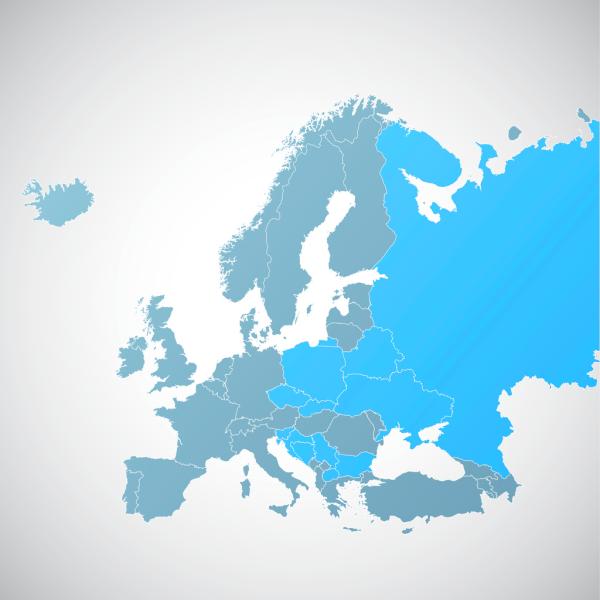
The term "Slavic" refers to an ethnic and linguistic group that is located in Central and Eastern Europe. Originally, the slaves were tribes living in Europe north of the Carpathians, and from the sixth century onward, with the fall of the Roman Empire and the withdrawal of the Germanic tribes that left for the south of Europe, they extended to the rest of the European continent as far as Siberia. We now distinguish 3 slave groups according to the linguistic roots and similarities: Western slaves, Eastern slaves and Southern slaves. oneHOWTO tells you which countries are considered slaves nowadays.
Wester Slavic countries
Western Slavs are a group formed by the Polish, Slovak and Czech languages. The 3 Slavic countries of this region are:
- Poland. Capital: Warsaw. Population: 38,615,884
- Slovakia. Capital: Bratislava. Population: 5,421,349
- The Czech Republic. Capital: Prague: 10,542,926 hab
There are also other Slavonic languages used by minorities in these countries, such as Kashubian in Poland, Silesian in Poland and the Czech Republic, and Sorbian in Germany. (But Germany is not considered a Slavic country because Only 45,000 people speak Sorbian).

The Eastern Slavic countries
The eastern Slavs are located in the following 3 countries:
- Ukraine. Capital: Kiev. Population: 44 662 802 inhab. Language: Ukrainian
- Belarus. Capital: Minsk. Population: 9 498 124 inhab. Language: Belarusian
- Russia. Capital: Moscow. Population: 146 544 7101 inhhab. Russian language. Russia is the largest Slavic country.
There are also Slavic minorities Ruthenians, Hutsul and Lipovenes spread out in several countries.
Southern Slavic countries
The southern Slavic languages are spoken in the Balkan region. These are the following languages: Slovenian, Bosnian, Serbo-Croatian, Montenegrin, Macedonian and Bulgarian. There are also minorities speaking Pomach and Carashovene. The countries of the Slavic Balkans are as follows:
- Slovenia. Capital: Ljubljana. Population: 2,066,797
- Croatia. Capital: Zagreb. Population: 4,225,316
- Serbia. Capital: Belgrade. Population: 7,209,764
- Bosnia and Herzegovina. Capital city: Sarajevo. Population: 3,871,643
- Macedonia. Capital: Skopje. Population: 2,077,039
- Montenegro. Capital: Podgorica. Population: 608,424
- Bulgaria. Capital: Sofia. Population: 7,175,548

Panslavism
There are therefore many countries considered Slavic, but each one has its own cultural differences and characteristics. There is, however, a political and ideological doctrine, Panslavism, which began in the 15th century and reached its apogee during the Prague Panslav Congress in 1848. This doctrine values the common identity of the Slavic countries and wants a Slavic political union.
This doctrine is nowadays mostly defended by Russia, and more or less defended by certain European nationalist circles, but is not actively defended by any government or external policies.
The Panslav Congress of Prague adopted a three-color Panslav flag, each color representing a Slavic group:
- The Blue: corresponds to the Eastern Slavs
- The White: corresponds to the Western Slavs
- The Red: corresponds to the southern Slavs

If you want to read similar articles to List of all Slavic Countries, we recommend you visit our Learning category.